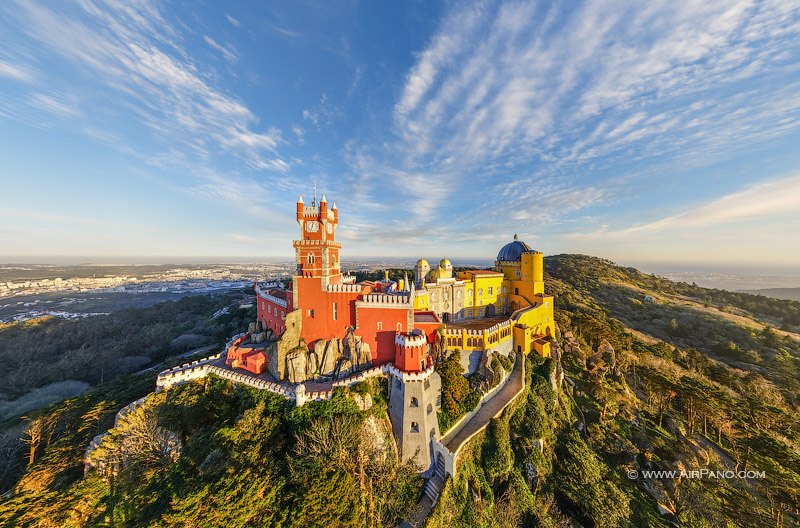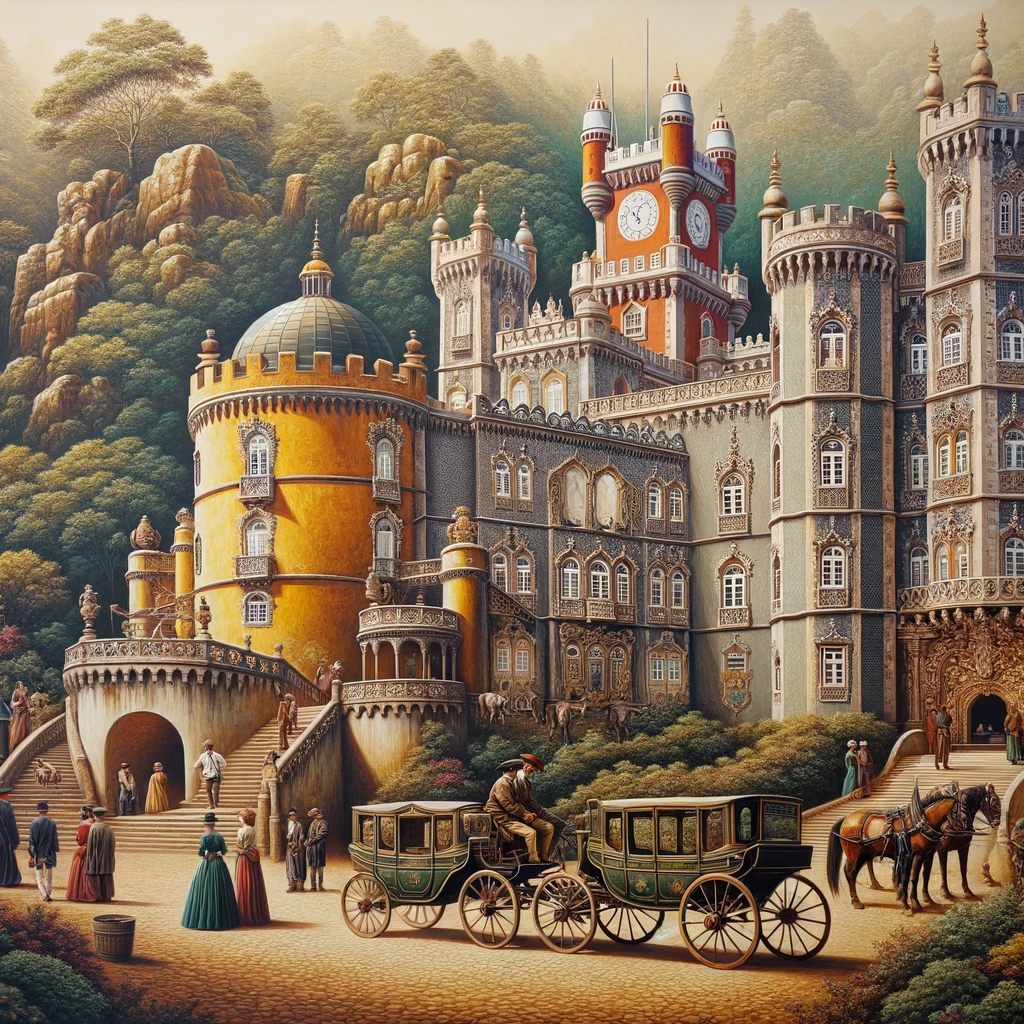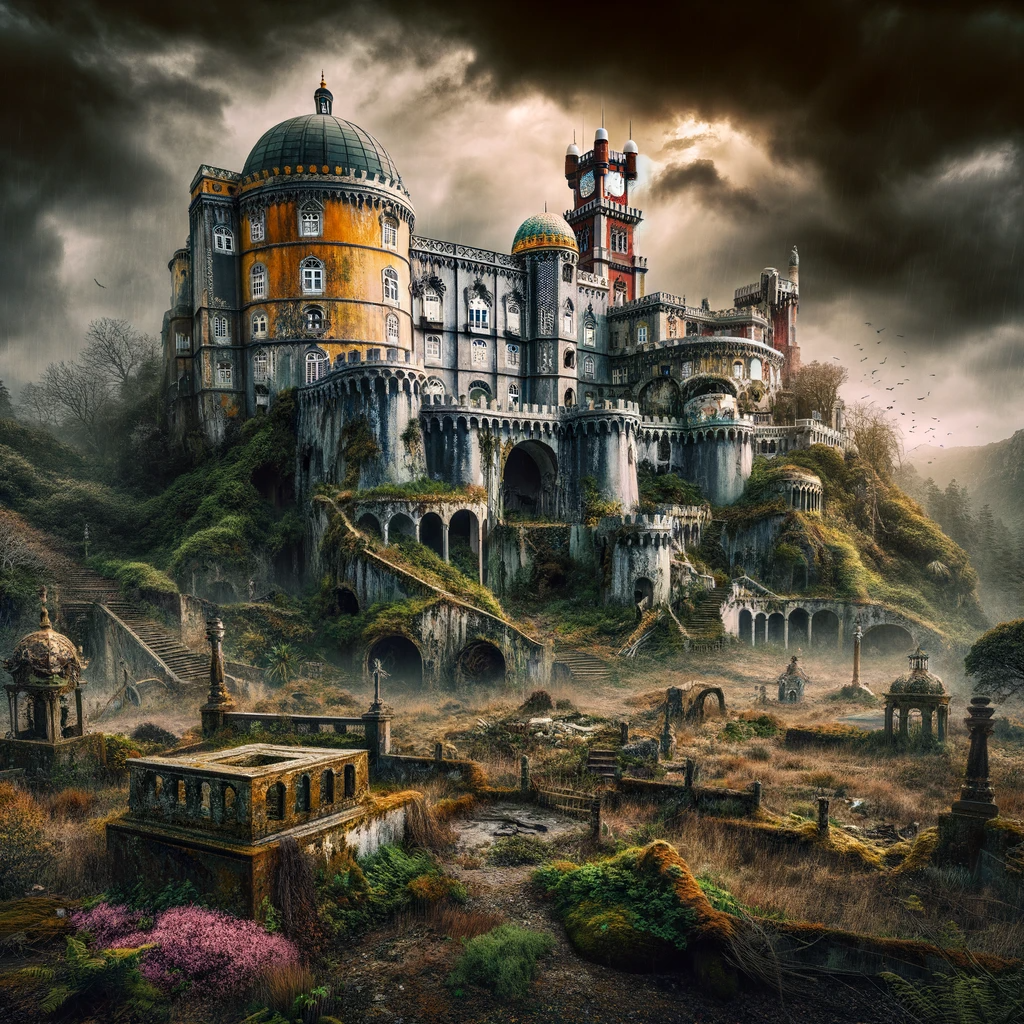
Nestled atop the hills of Sintra, Portugal, the Pena Palace stands as a vibrant testament to the creative spirit of the 19th century. Officially known as Palácio da Pena, this UNESCO World Heritage site mesmerizes visitors with its vivid colors, intricate details, and breathtaking views. Its unique blend of architectural styles reflects a romantic vision that is deeply rooted in Portuguese history and culture.
Castle History
Construction of the Pena Palace began in the 19th century on the ruins of a medieval monastery. King Ferdinand II, enamored by the Romanticism movement, commissioned the project to transform the site into a summer residence for the Portuguese royal family. The palace became a hub of European Romantic architecture, witnessing significant historical events and hosting illustrious figures throughout its existence. Its walls echo with stories of royalty, opulence, and artistic expression.
Architectural Style and Features
Pena Palace is a kaleidoscope of architectural styles, predominantly featuring Romantic, Moorish, and Manueline motifs. Its vibrant facades, ornate window frames, and mythical statues are set against the backdrop of the Sintra mountains, creating a fairy-tale-like ambiance. The use of local materials, such as marble and limestone, adds to its authenticity and allure. Noteworthy is the Triton's Gate, a symbol of the creation of the world, and the cloisters of the former monastery, seamlessly integrated into the palace's structure.
Significance and Cultural Impact
The palace is not just an architectural marvel; it's a cultural beacon. Pena Palace has significantly influenced local art, literature, and tourism. It has inspired countless artists and writers, its image and symbolism deeply ingrained in Portuguese culture. Legends and tales associated with the palace add a mystical layer to its historical facade, captivating the imagination of visitors and locals alike.
Current Status and Tourism
Today, Pena Palace is more than a historical monument; it's a vibrant cultural hub. Meticulously restored and preserved, it welcomes thousands of visitors annually. Tourists can explore its opulent rooms, stroll through the lush gardens, and marvel at panoramic views of Sintra and the Atlantic Ocean. The palace offers guided tours, cultural events, and educational programs, making it a must-visit destination for those seeking to immerse themselves in Portugal's rich heritage.
Conclusion
Pena Palace is not just a testament to the past; it's a living legacy. Its unique architectural synthesis, historical significance, and cultural influence make it an indispensable jewel in the crown of Portuguese heritage. A visit to Pena Palace is more than a journey through time; it's an encounter with the soul of Portugal, offering a glimpse into the nation's vibrant spirit and artistic prowess.














